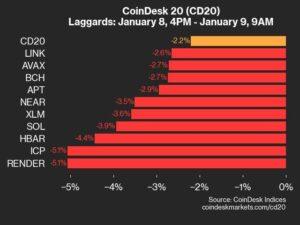Although a litecoin (LTC) exchange-traded fund is still only theoretical, investor demand for the product could reach $580 million if Wall Street adopts it at the same pace as LTC’s better-known cousin bitcoin.
This calculation is based on approximately 6% of the total Bitcoin supply now locked in various ETFs. Similar performance from an LTC product would generate over $500 million in inflows for the token, which has a similar proof-of-work consensus mechanism to BTC.
These possibilities became visible on Thursday as market participants began weighing the likelihood of LTC becoming the third crypto asset to get its own ETF in the United States, after BTC and ETH.
Canary Capital, a new investment firm focused on digital assets founded by former Valkyrie Funds co-founder Steven McClurg, is best positioned to issue such a product.
He got the ball rolling on a litecoin ETF in October. The Nasdaq exchange filed a 19b-4 with the Securities and Exchange Commission on Thursday, officially putting the regulator on hold to make a decision.
Bloomberg’s Balchunas expects LTC to get SEC approval given the industry discussions he said he’s heard. Litecoin’s similar technical specifications to Bitcoin may also prove a factor, assuming their reliance on a proof-of-work consensus mechanism means a better likelihood of being considered a commodity.
The question is whether there is enough investor demand to make a Litecoin fund a success or not.
“Even though demand is relatively low, it could still see some demand,” said James Seyffart, ETF analyst at Bloomberg Intelligence. “Just because it won’t be as wildly successful as Bitcoin or even Ethereum ETFs doesn’t mean it can’t succeed. The market and investors will make this decision.
Bitcoin ETFs have set unprecedented records in their first year of trading, with the BlackRock iShares Bitcoin Fund (IBIT) becoming the most successful launch in the history of U.S. ETF launches.
“The key issue here remains uncertainty over investor demand for additional products and the importance of launching new crypto ETPs,” JPM analyst Kenneth B. Worthington wrote in a note Monday.
Worthington believes that tokens beyond Bitcoin, Ethereum or Solana often lack depth because they “may attract additional attention for a limited time.”
According to a JPMorgan report released earlier this week, approximately 6% of Bitcoin’s total market capitalization of $1.97 trillion is locked in ETFs. In comparison, Ethereum ETFs (ETH) represent about 3% of Ether’s $401 billion market cap.
It used this so-called “adoption rate” to determine the amount of inflows the proposed XRP (XRP) and Solana (SOL) ETFs could attract, which Worthington estimates could total a combined AUM of up to 14 billion dollars.
Applying this calculation to Litecoin, which has a market capitalization of $9.6 billion, Canary Capital’s fund could attract between $290 million and $580 million in the first year of trading, depending on how the investors will adopt the fund.
While $290 million seems disappointing compared to the $108 billion raised by spot bitcoin ETFs or the $12 billion ether ETFs currently hold, it is a larger amount than most ETFs in the United States manage.
According to Seyffart, only about 1,330 ETFs out of about 4,000 in the United States have assets under management greater than $300 million.




